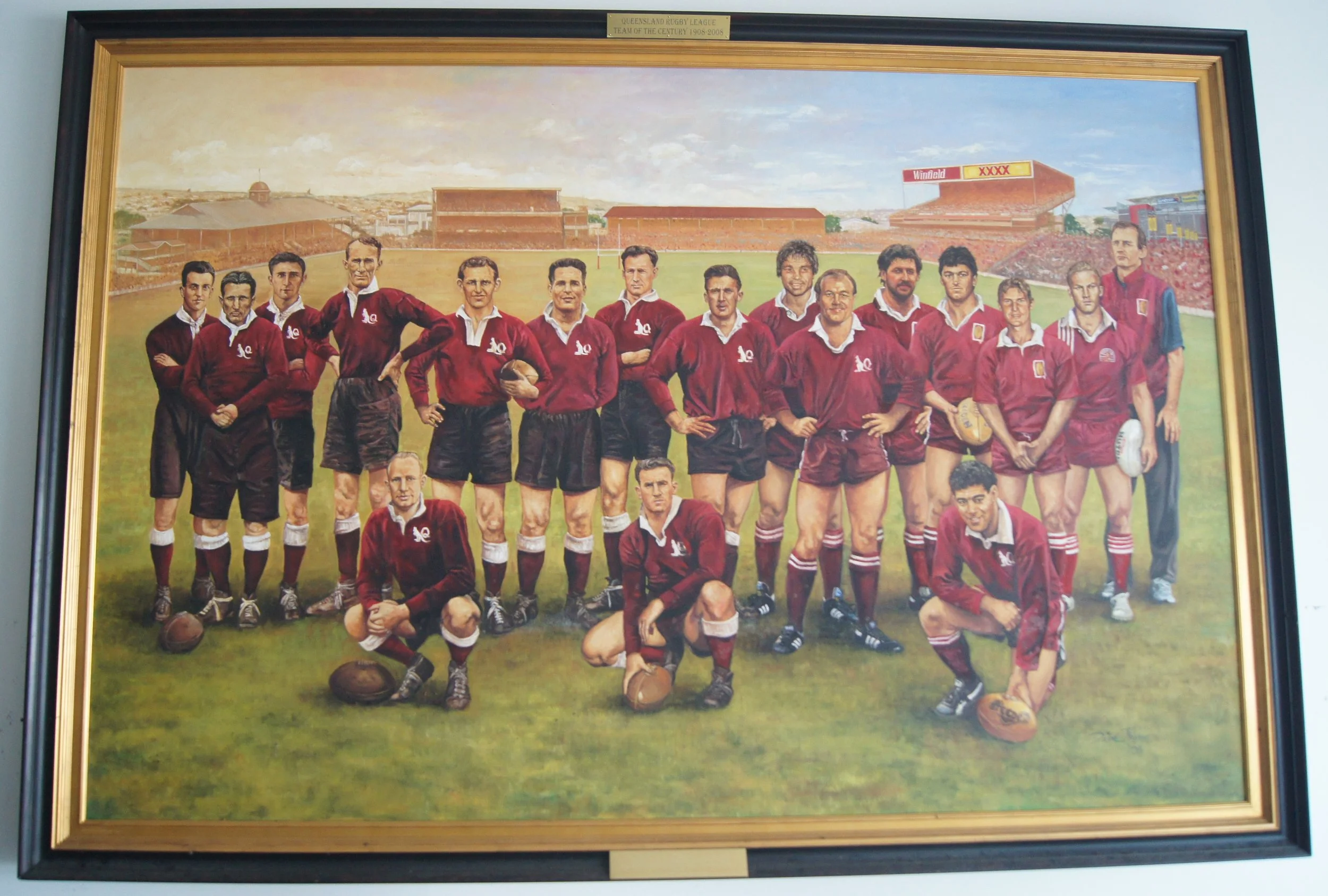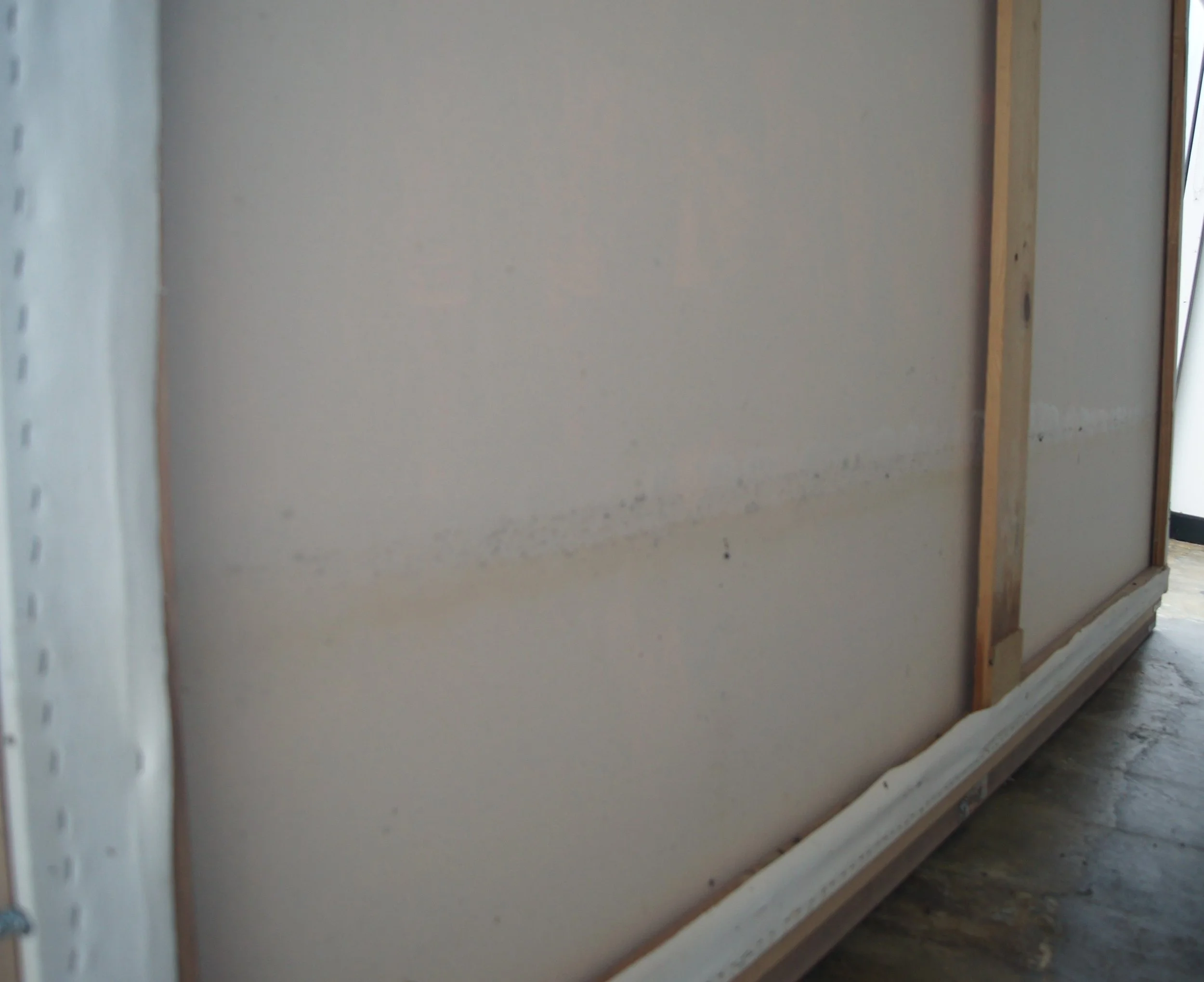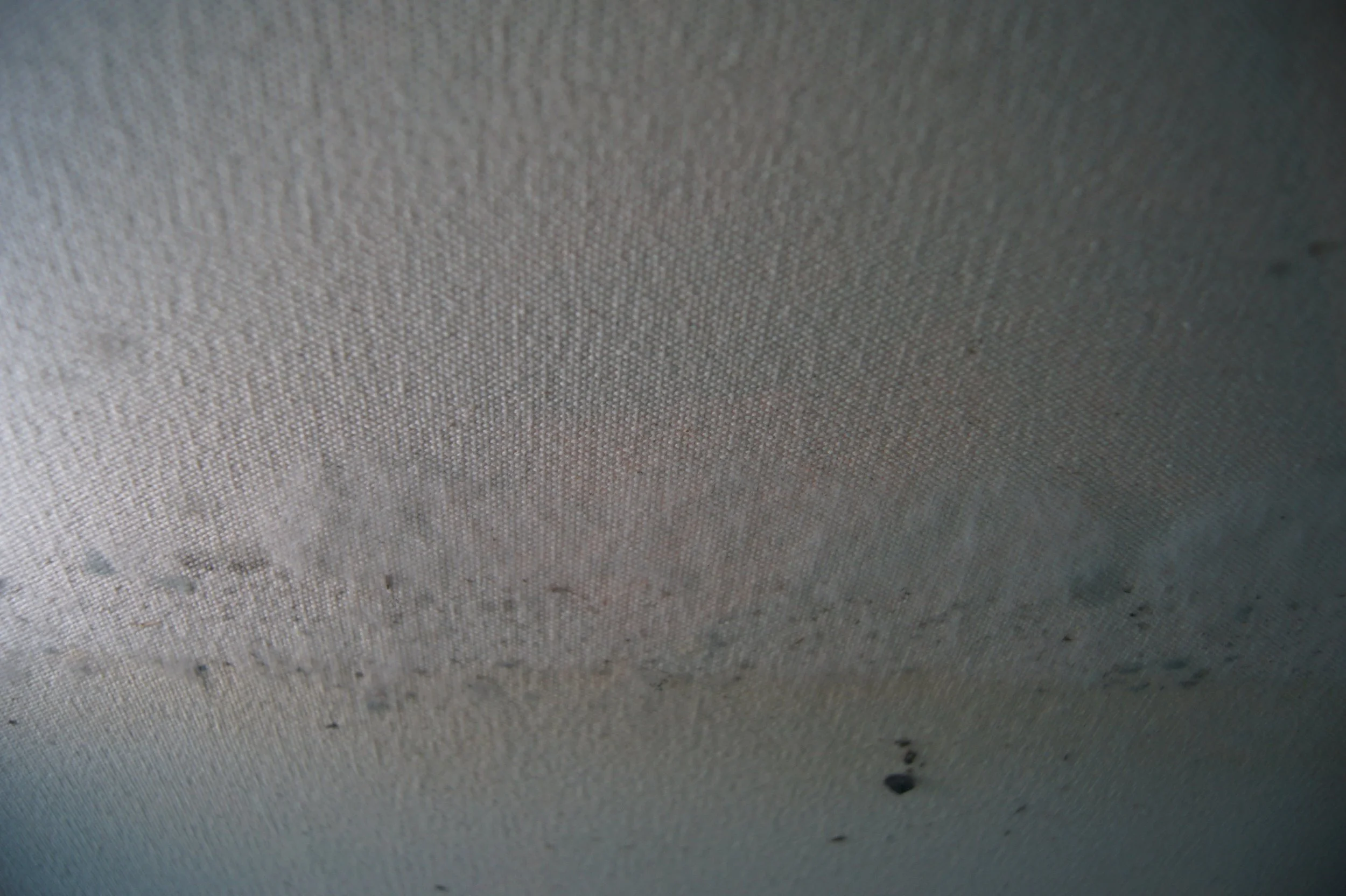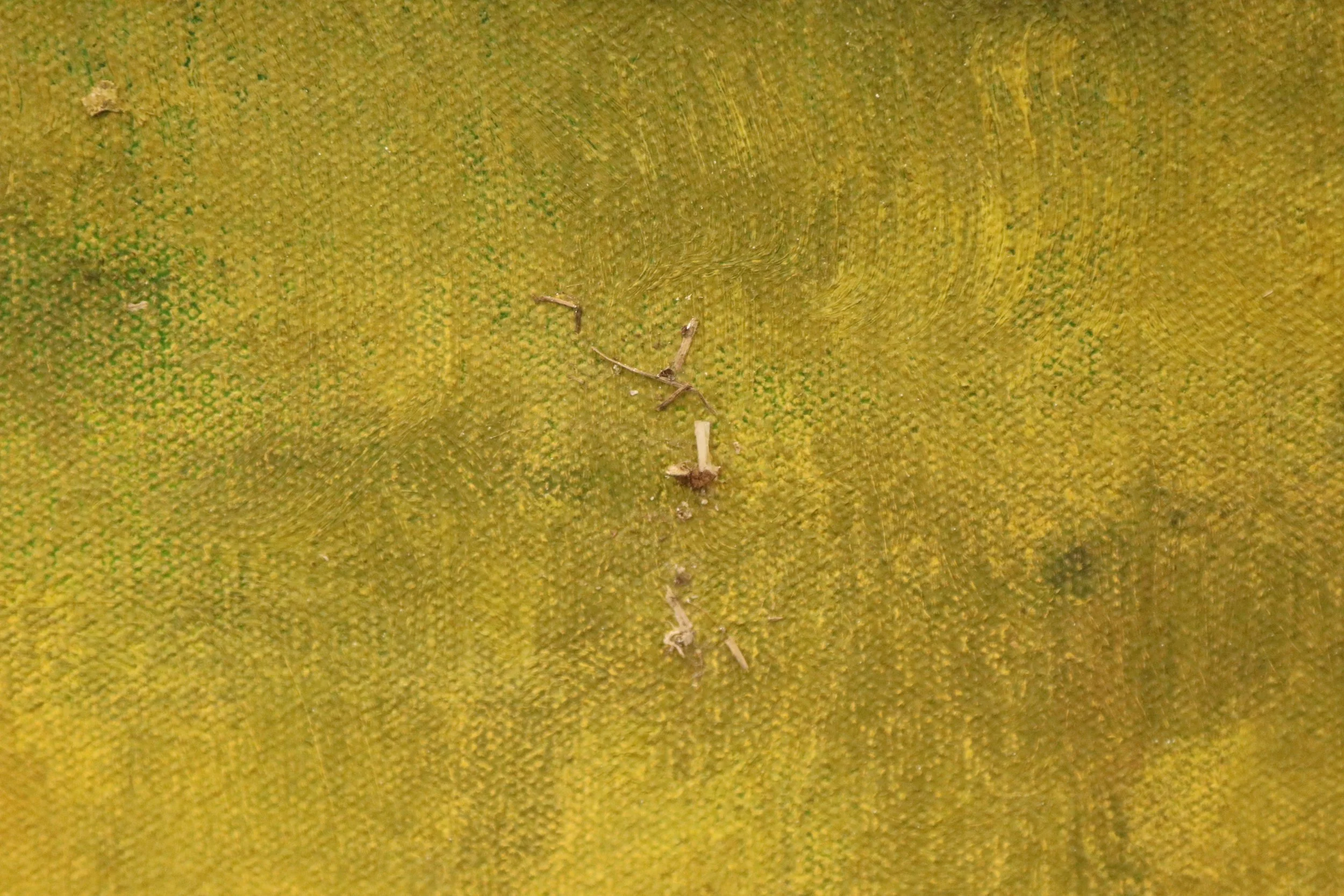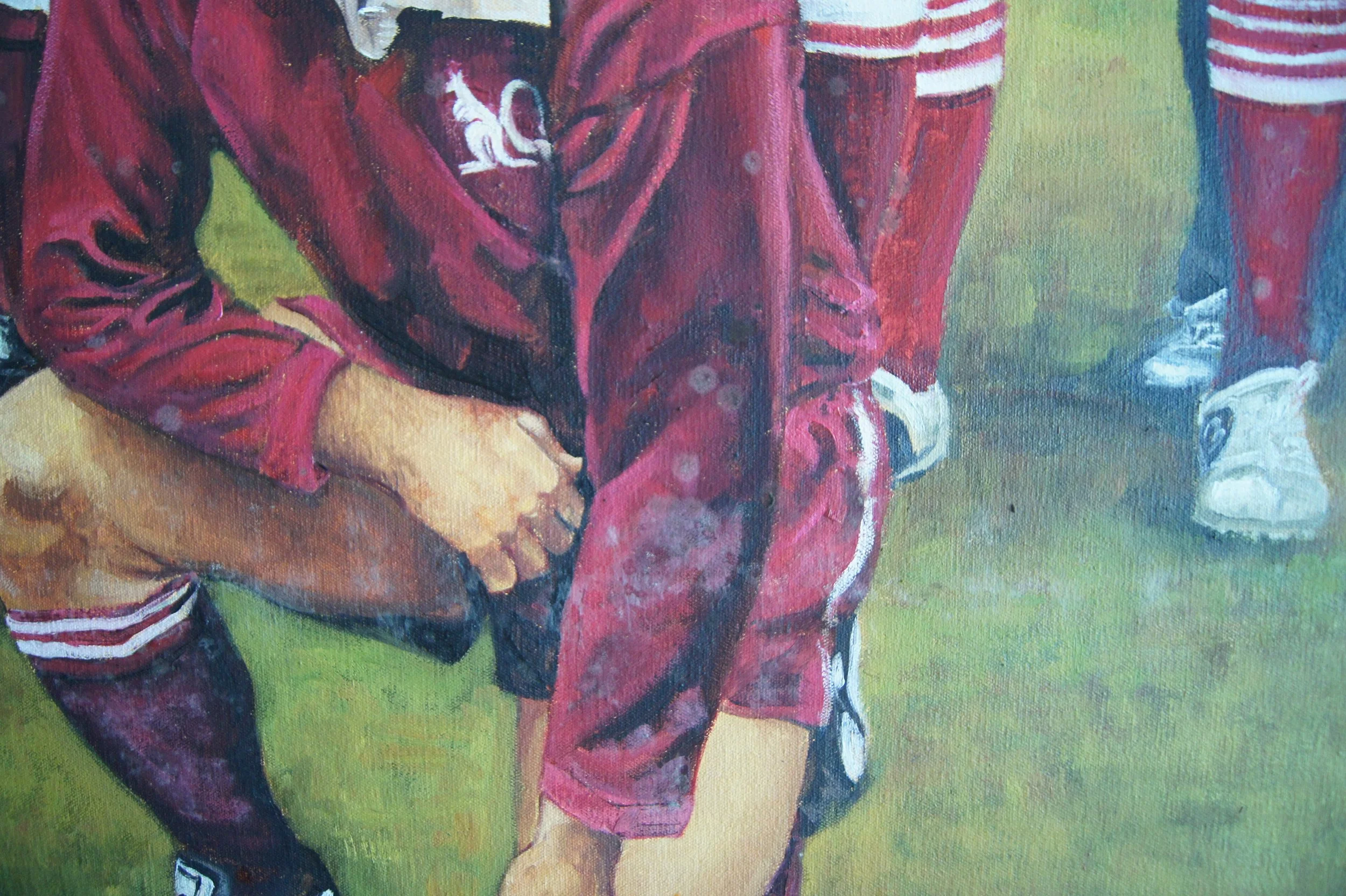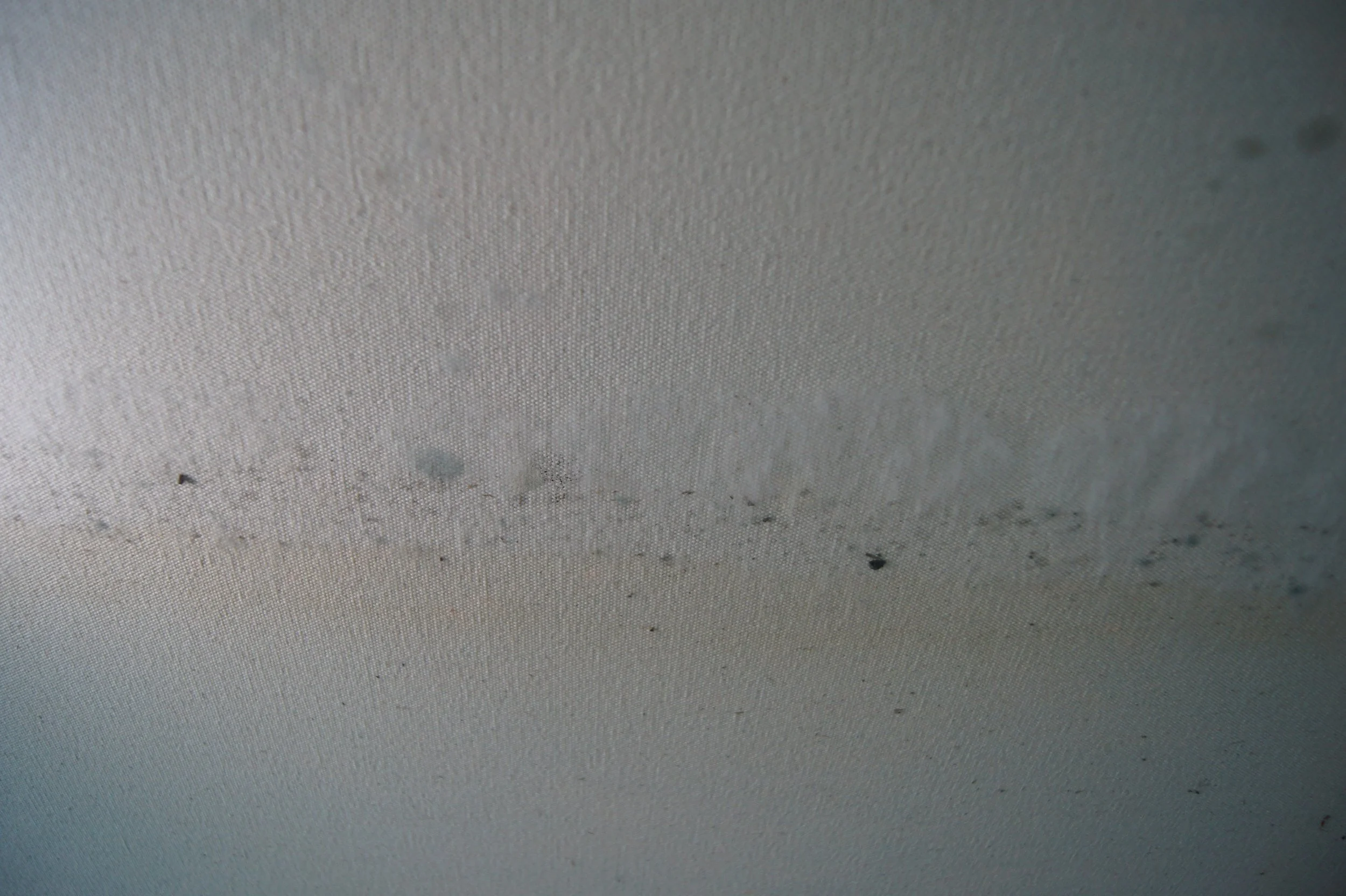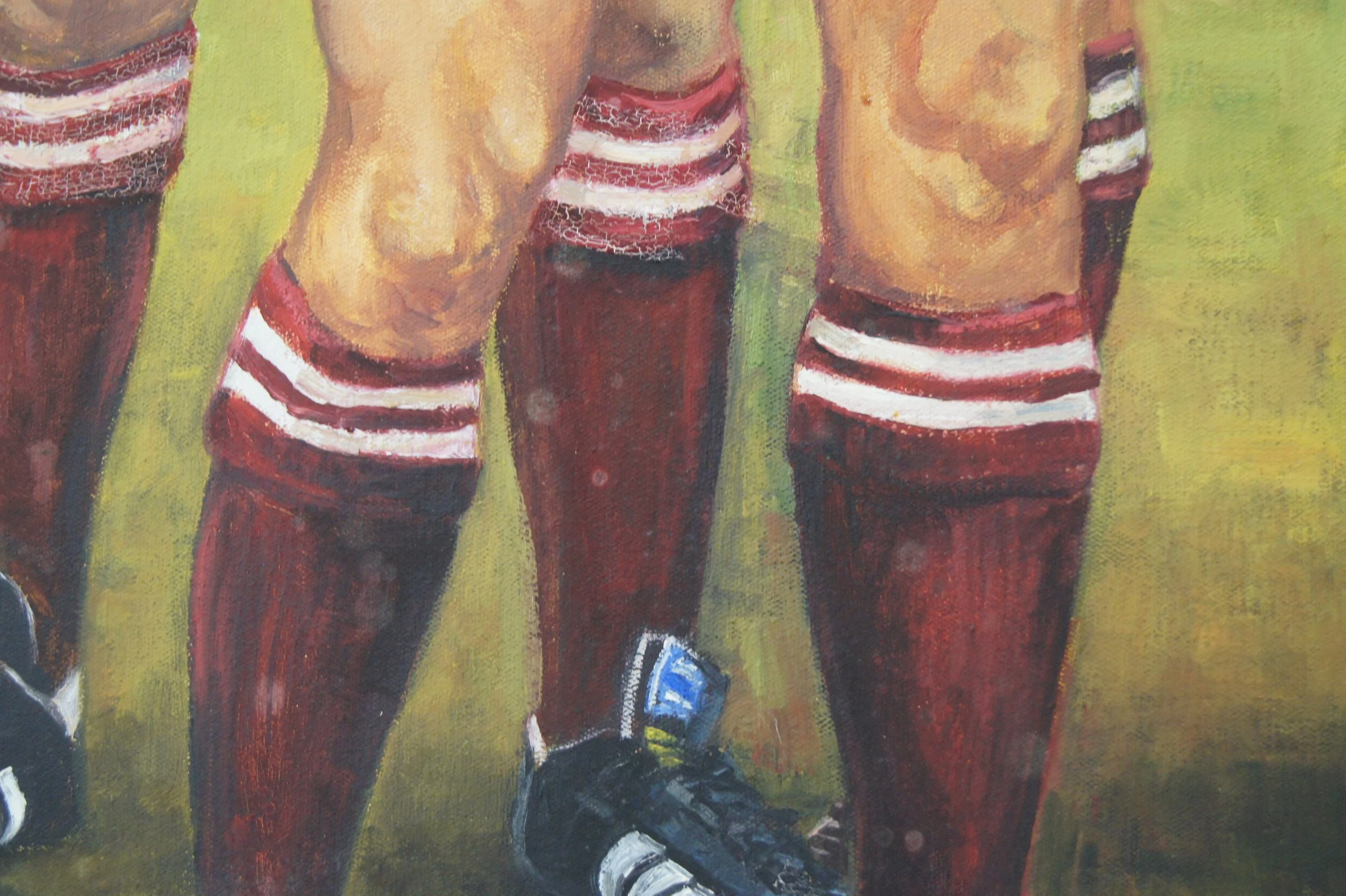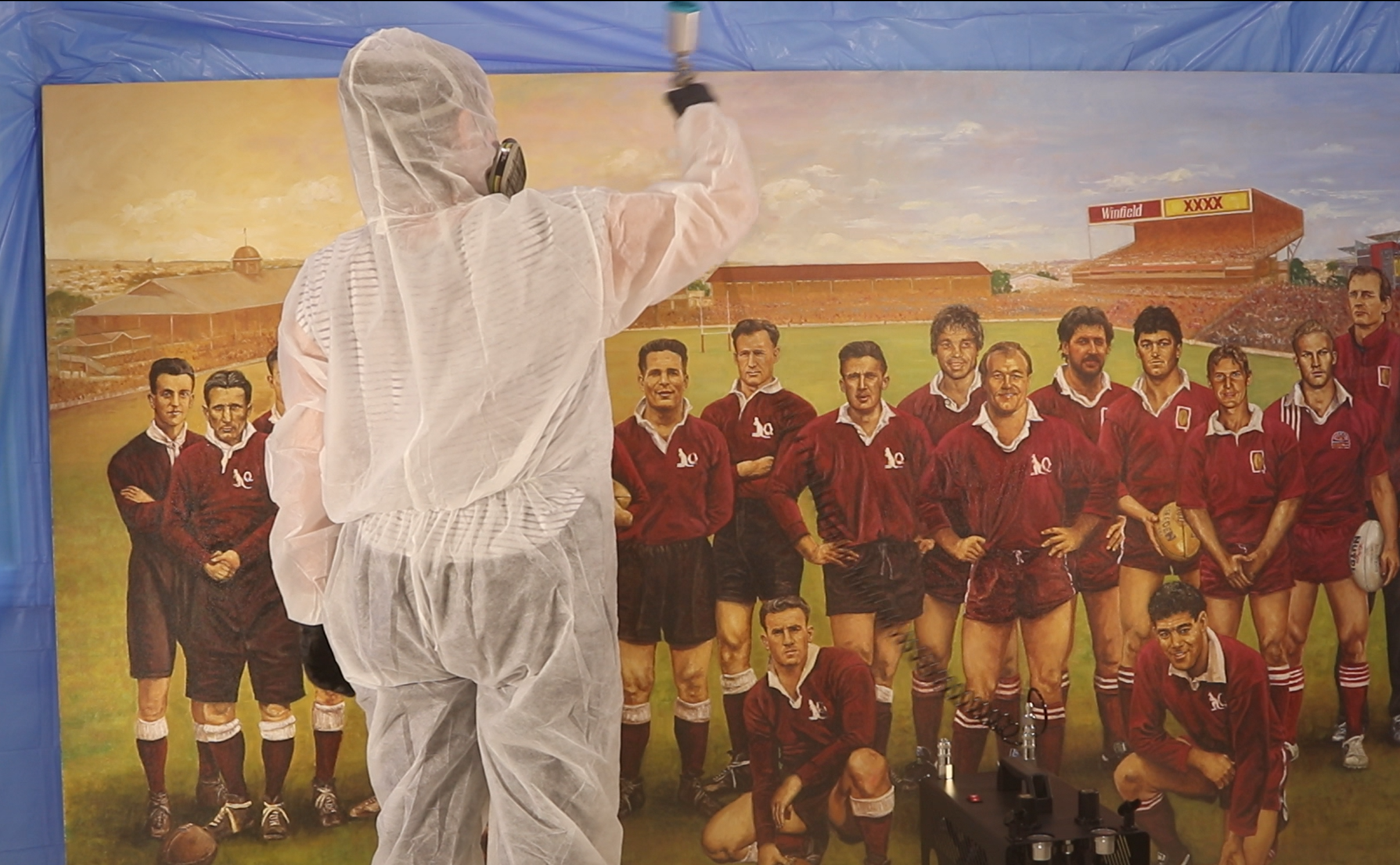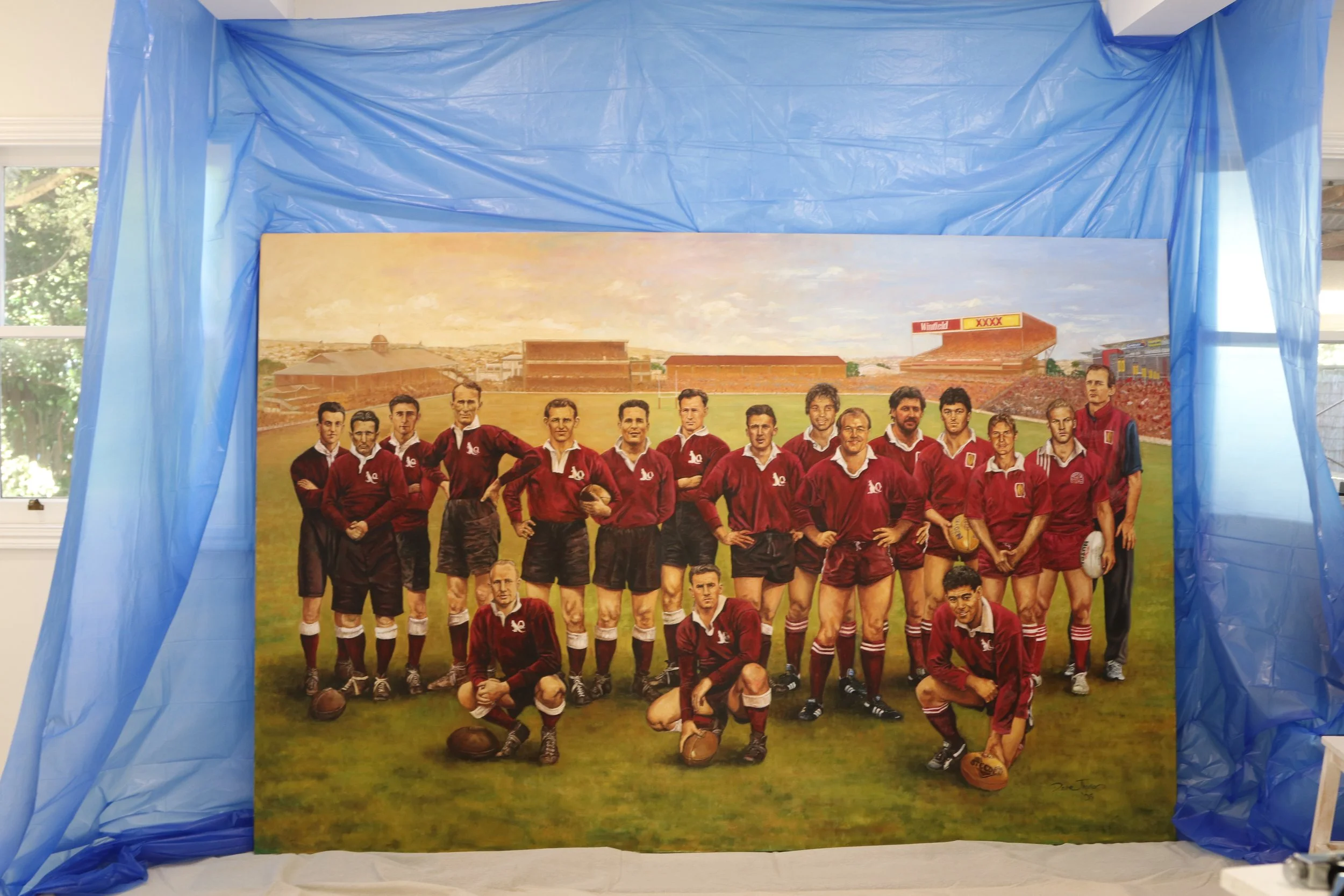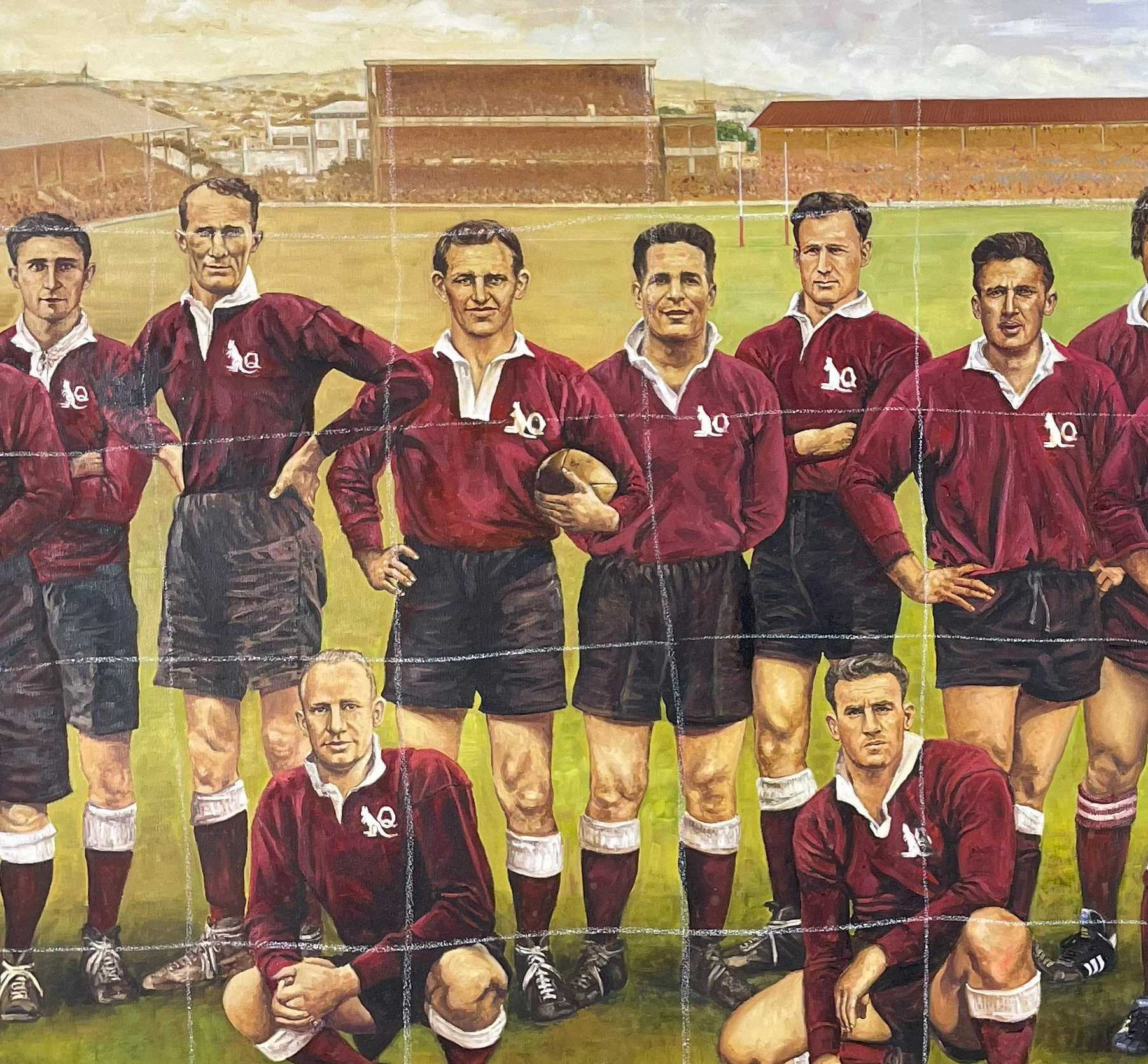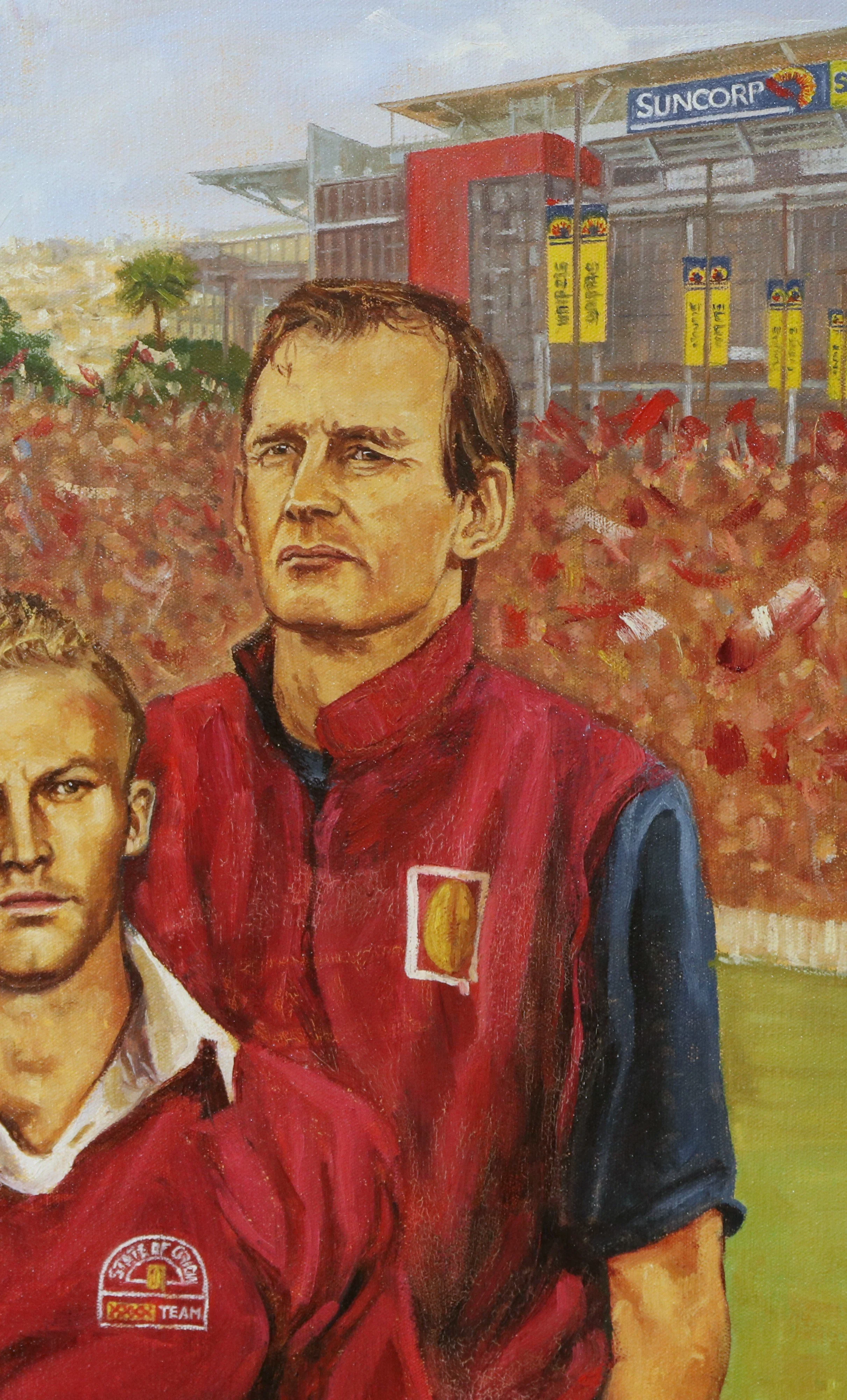
Queensland Rugby League Team of the Century 1908-2008' by Dave Thomas 2008
In early 2022, the artwork, 'Queensland Rugby League Team of the Century 1908-2008' was devastated by an unexpected flood. The ground floor of the building where it was displayed ended up submerged, and the magnificent painting measuring 1m80 by 2m70 (5.9” x 6.56”), was not spared. This piece, celebrating the greatest Queensland State of Origin players from the 1960s, is more than just a painting. It's a cherished symbol of our cultural heritage and sporting pride.
Witnessing the aftermath of the flood was devastating. All the display cabinets had been filled with dirty water. Mud was present on the floor, a water line was present at shoulder level on the wall. The canvas was soaked, and mould had started to form fully on the reverse of the canvas as well as on the paint layer. The frame started to warp and was risking to deformed the strainer. Consequently, we agreed to remove the frame and discard it straight away.
Step 1: Assessment
The first step in restoring any damaged artwork is a thorough assessment. During this step, we realise tests to make sure that the paint layer in stabilise.
This included the extent of water damage, areas affected by mould, and any physical distortions in the canvas and frame.
Understanding the full scope of damage is crucial for planning the restoration process.
Step 2: Clean and mould removal
This included the extent of water damage and areas affected by mould. Understanding the full scope of damage is crucial for planning the restoration process. We used soft brushes and a vacuum with a HEPA filter to remove loose mould spores.
For the more stubborn mould, we applied different solutions for the paint layer, the reverse and the strainer. We also used aromatherapy to kill further the mould for weeks we tested the oil first to make sure that it had not deteriorated the paint layer first. This step was delicate; applying too much moisture or pressure could further damage the painting.
With the mould removed, the next step was to clean the painting. A solution of deionised water and mild detergent was applied to the surface to remove any remaining dirt and contaminants. This solution was carefully chosen to be gentle enough not to harm the paint but strong enough to clean the surface effectively.
We used cotton swabs to apply the solution, working in small sections to ensure thorough cleaning.
Due to the size of the painting, we realised the section with chalk to know where the treatment had been realised.
Step 3: Varnish
A protective layer of varnish was applied to the painting to protect it from future environmental damage and to give it a uniform finish.
The varnish used was chosen for its clarity and ability to be removed in the future, ensuring the artwork's longevity.
The retouch is applied on the varnish and not directly on the paint layer.
Step 4: Retouches
Using fine brushes, high-quality pigments and conservation-grade colour, we meticulously inpainted the areas where the cracks were blocking a clear read of the paint.
This step required precise colour matching to ensure the new paint blended seamlessly with the original. It was a painstaking process, but essential for restoring the painting's original vibrancy.
Step 5: Final Varnish
We spray varnish again the artwork to protect the retouches.
Once the painting was finished the painting was framed by Artis Pura with a similar traditional frame that where present before it was irreversibly lost during the flood.
Now restored to its former glory, ready to inspire future generations of rugby league fans. it was an honour to be a part of bringing this beloved piece of history back to life and, reflecting our deep respect for the cultural and historical significance of this remarkable piece.
The painting now stands not only as a tribute to the legendary players of the century but also as a symbol of the enduring power of art to overcome adversity.
The painting, once ravaged by floodwaters, now shines brighter than ever, ready to inspire future generations of Queenslanders.

